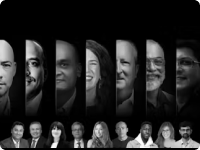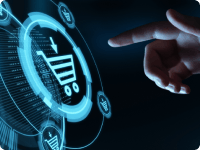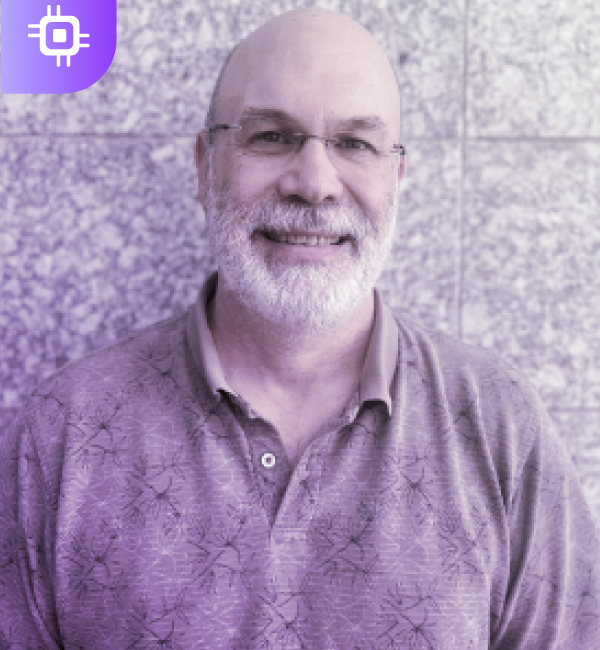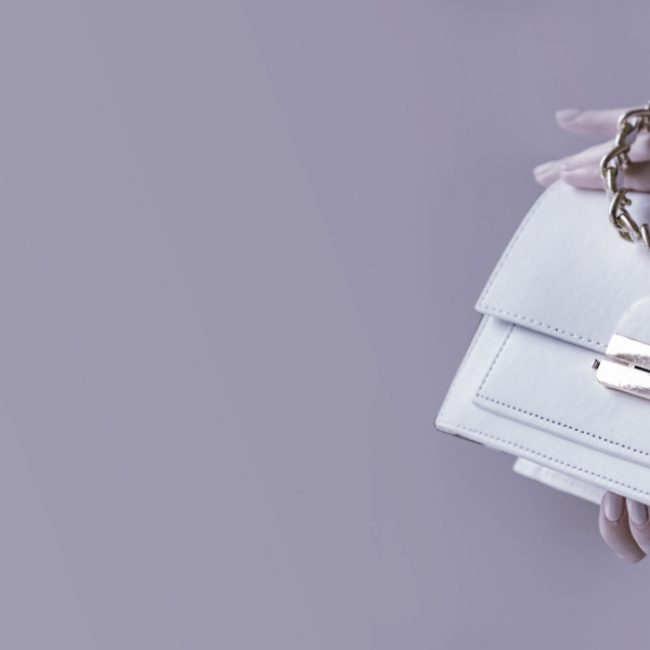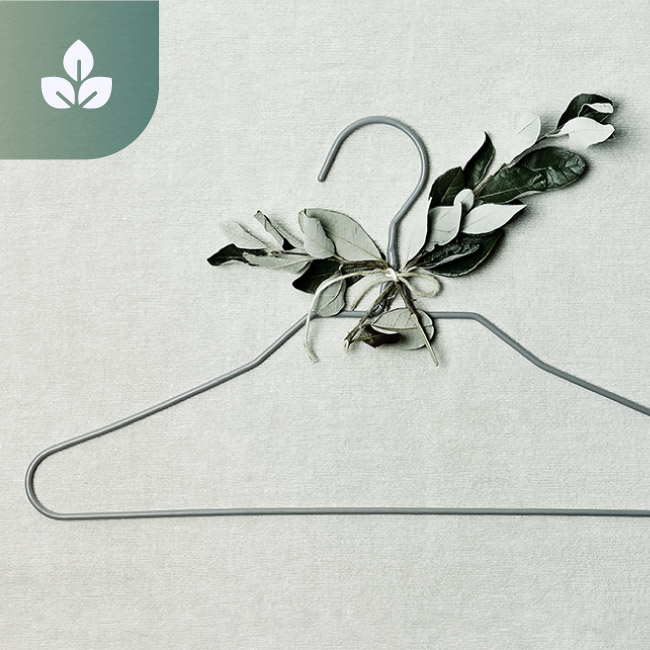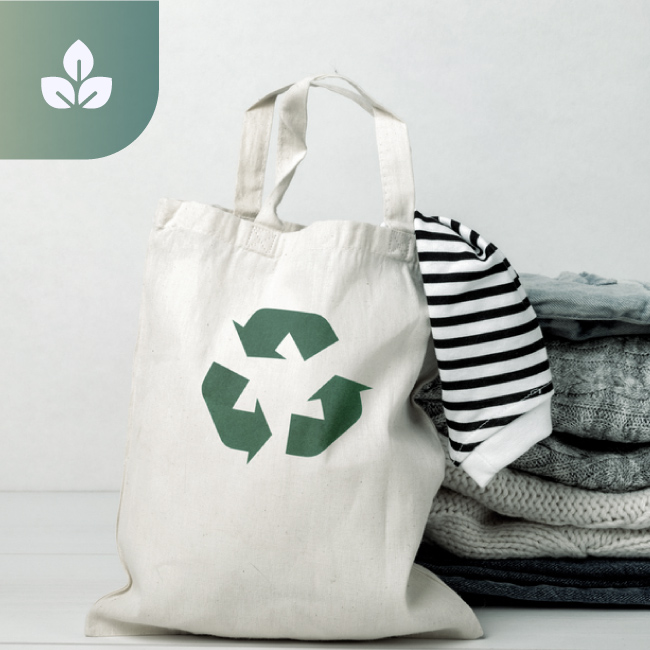
Tech Managed Marketplace – thredUP’s Strategy To Resale At Scale
About this Podcast:
Anthony Marino is the President of thredUP, one of the world’s largest fashion resale marketplaces. They sell over 35K brands – from Gap to Gucci, they have it all. thredUP is reinventing resale with a mission to inspire a new generation of shoppers to think second hand first.
Episode Transcript:
Akshara Subramanian
Hi and welcome to a brand new episode of The Vue Podcast! I'm Akshara, the host and today I have with me Ashwini Asokan, our founder and CEO of Vue.ai, an A.I based automation platform for retailers across the globe. Our guest for today needs no introduction, but I'm going to try and give you one anyway. Founded in 2009, thredUP is one of the world's largest fashion resale marketplaces. They sell over 35000 brands so from Gap to Gucci, they have it all and they're reinventing resale with a mission to inspire a new generation of shoppers to think second hand first. And given the conversation and the weight that sustainability carries on retail on us in fact, thredUP has been such a game changer and today we have the privilege of talking to Anthony Marino, the President of thredUP. Welcome Anthony, it's so great to have you here today!
Anthony Marino
Thanks. It's great to be here.
Akshara Subramanian
So before we talk about thredUP, let's talk a little bit about you. You know, tell us what your journey with thredUP has been like and what this period of incredible growth has been like for you.
Anthony Marino
Yeah, my journey at thredUP started in my kitchen in my New York apartment back in 2013.I came home from work one night and there was a green polka dot box, a thredUP order sitting on our kitchen table and I kind of walked in and gave my wife a hug and I said, what's that? And she sort of gestured for the box and she said, take a look and I pulled out a really nice Cashmere sweater and I said, WOW, this is really nice and she said I got it for 29 dollars. I said, Oh, great. and she was like no, you don't understand. She said it's a 200 dollar sweater and I said, well how did you do that? and she said, well, it's used and I kind of looked at her kind of a little confused and was like, used by who? You know, do you know where did this come from?
And she kind of gave me, you know, the disapproving, like you don't know anything kind of look and she's like, it's from thredUP and she said, all my friends are talking about this company. She said, and the way it works is you send in the clothes you're not wearing and you can either get credit on their site to shop or you get money for the clothing that they can resell. And she said, I think you should go work for this company and that was literally how it started and so it's been almost 7 years since that moment.Ashwini Asokan
Oh, that's an interesting story. It's not one that you hear very often. So, yeah, I think for us, you know, we've been tracking thredUP for quite a while now. We’ve also been working with you guys for a bit now. And I think what's been really, really interesting to us is just how this whole sustainability movement and the whole circular economy, the second hand retail story, you guys really I think doubled down in terms of just all the different types of things you did from a tool kit perspective to actually build the movement itself. And, you know, one particular thing that I can definitely tell you Anthony, our team kind of waits every single year for, is that resale report okay? It's pretty much become the gold standard for data relating to a lot of the sustainability movement, right? And according to a recent report from last year, the market has grown 21 times faster than the rest of fashion out there, specifically in the US and is expected to grow to about, what 51 billion?
Anthony Marino
That's right. In the next five years, it'll grow to 51 billion dollars. I know, it's incredible 56 million women bought second hand products. Yeah. I mean, 56 million women bought second hand products in 2018 and that's up from 44 million in 2017. And when we release our next resale report, which will come out at the end of this March, we expect those numbers to climb. I mean 64 percent of women bought or say they're now willing to buy second hand clothing. And that you know, the interesting thing about this is so we've been at this for a while. You know, you mentioned in your introduction the company started in 2009. And, you know, it had a few pivots along the way. But, you know, it seems some folks said it like this was an overnight thing, but it's been happening, you know, slowly but surely, inconsistently over the past several years, and I think a couple things are behind that. One of the things is that people just fundamentally have too many items of clothing in their closets. So they buy a lot, but they don't necessarily wear a lot and they don't necessarily get satisfaction from the things that they buy. And so they have a full closet and they're reminded every day when they go when they're that 50, 60, 70 percent of it goes unworn and it makes people feel kind of guilty, you know, because it's money and it's space and it's kind of looking you in the face every day. And so what we really tried to do is address that core consumer problem, which was I have too much clothing and I don't really have an easy way to clean it out, you know, to get rid of it, to make space, to put a little money in my pocket, if that's what my motivation is and to also to put it, you know, put that unworn clothing to good use. And so we spent a lot of time building a business and an operations and logistics platform that has the capacity to take, you know, virtually any brand, you know, we accept 35 thousand brands of women's and kids clothing and be able to process it and photograph it and price it and put it online and then pay you for the things we sell and the reason why I connect the consumer problem I'm having just too much stuff to the operating platform that thredUP has been so hard at work building is because being able to offer consumers something that's simple and easy and convenient required that we figure out, well, how do you receive and process literally hundreds of thousands of unique items of clothing every single day and put them online at meaningful scale and we've already surpassed 100 million items processed, unique items processed. So, and so that for us, you know, that's why you guys, as soon as the consumer dissatisfaction with their own closet was building, you know, we were building the infrastructure to provide a solution. And there's so many other powerful trends around people wanting to buy, consumers wanting to buy great brands for less, there's big trends and I probably shouldn't even say they're trends because I think they're just shifts in consumer thinking around your impact on the environment. And you know, while no one wants to pay more to do good, if you can do good in the normal course of your shopping and spending and living your life, that is powerful, you know, so those trends, how young shoppers and millennials and Gen-Z shoppers are adopting second hand at twice the rate of some of their, some of the older komp groups really just shows that the market really is shifting, consumer behaviour is shifting, and so we really wanted to have a platform to take those items of clothing, process them and be able to sell them to accommodate that, you know, that major move in shifting consumer behaviour.
Ashwini Asokan
Yeah. And I think I mean, it did come around, right? I mean, if I had to just briefly go back to the 2000's, so much of it was just about going online, right. And I think everything revolved around discounting or just the ability to buy something online as opposed to offline and then it's about it turned to about how quickly somebody was going to receive that, right, like same day delivery and two-day delivery and all of that. And I think it's taken us a while to kind of get here, so to some of that, you know, I think particularly looking at it as what you guys did from an operating platform perspective, I think it's a really interesting piece of this puzzle, right where I think where we're drawing out the fact that it wasn't just about the fact that the market itself was ready and people were beginning to kind of participate in this almost like a larger value system for lack of a better way to put it but also, you guys ended up focusing and doubling down on that operating piece of the puzzle as well, just in terms of everything you have to do to handle that kind of volume that's just going through the hands of all the people in your team and I think that in particular fascinates us at Vue.ai, given we're all about automation and we're all about finding ways to do that and I think that part of it has always been fascinating about just the sheer volume that goes through thredUP every single year, yeah.
Anthony Marino
And you know, and for many steps along the way, making the decision that we did to, you know, to take in the items, to process the items ourselves, to make it really easy for the seller, it was kind of a set up against conventional wisdom. Conventional wisdom was don't take the product, you know, just be it simply in the business of connecting, you know, buyers and sellers in your marketplace and we you know, we kind of thought long and hard about consumer behaviour and what consumers wanted and we said, you know, if there's a way to generate unit profits and make it easy for the customer, isn't that the problem we should try to solve? You know? Because if we can, if we can do what 99 percent of the people are telling us can't be done with processing unique items of clothing and we can make it easier for the consumer, that's a really powerful, you know, innovation and capability for the company to develop mastery over and I will not say it's been all fun and games and we've had our challenges and ups and downs along the way and I'm sure we have many more coming but it's been exciting to be able to do that for consumers and then see, you know, see the response in their repeat behaviour and in their satisfaction with the experience and just more broadly, you know, our mission as a company is to inspire a new generation of shoppers to think second hand first and it's not because we believe that a 100 percent of anyone's closet at any time will be all secondhand clothing but we're really confident that it's equally unlikely that people's closets will be 100 percent new. And, so if we can play a part in making that happen and making it easy for consumers in up-cycling more items of clothing so they're in use rather than sitting idle, we think that's a win for the consumer, we think it's a win for us as a business, it's a win for the environment and that's you know, that's just that's the kind of difference that we all wanted to make when we got aboard with thredUP.
Ashwini Asokan
You used the word movement and I think that that in particular is an interesting one, because, I mean, we you know, in the startup community, I think at some level we're all constantly thinking about what it means to create a category, what it means to like, you know, define our own metrics, define kind of what it means to bring people into a particular kind of thinking or a movement like you put it and I think you guys, more than most others, have succeeded in actually being one of those who will keep out of that movement, right and in creating that movement. Can you just jump into that a little bit? Because Anthony, I think until recently, you were also running a large part of the marketing side of things and I think as a brand, the brand has evolved so much, the brand, the positioning, the values, the storytelling and just the idea of creating this category itself along with all the tools I think you guys have built along the way right, curated wardrobes like, you know, online closets, the calculator, you know, for people to check their footprints. There's been so many tools, I think, in your toolkit as you guys built this movement. Can you just tell us a little bit about that?
Anthony Marino
Sure. So, yeah, so when I joined, I've been president of the company for almost two years, but I joined back in 2013 as Chief Marketing Officer and it was a really different time at the company and meanwhile, we had established, you know, brand market fit. We had a lot of challenges in getting the processing costs of the items down, understanding whether we could even justify spending money on marketing, in addition to all the other work that still had yet to come as to how to scale those things in and automate where necessary but one thing I'll say is that kind of like my journey as a CMO, it started with the thought that I'd be focused on marketing, you know but it really out of necessity became focused on how do we start to build a business where we had, you know, predictable repeat behaviour amongst our visitors and shoppers and so, it really focused on the fundamentals early on, how do we show independent of where our margins were when we were sub-scale? You know, did the customers love this experience and did they come back? And so that became you know, what sort of what started as a set of marketing goals, just got pretty quickly to a set of very simple business goals like let's acquire and keep, you know, and let's do that in an organic way as possible because as I'm sure you know, Ashwini, cash is always precious, you know, in a startup and many of us on the management team at thredUP have been through enough ups and downs over the years that we know that those times when capital is freely flowing don't last forever. And so it kind of tempers, it tempers your exuberance, you know, when you're in the middle of it, because we've all looked down that deep, scary cliff at different points. So we just really stayed focused, you know, on the fundamentals of the experience and then over time, you know, once we had that repeatable behaviour and once we really understood, you know, the core value proposition for customers on both sides of the marketplace to sellers and the buyers, then it became about, well, how do you scale a marketplace and do it in a balanced way, you know, you don't want to go out and acquire a lot of demand and like you have the appropriate supply, you know, that's just that manifests itself if you do that in the form of high marketing costs and low conversion. And on the flip side, if you acquire a lot of supply, you don't have the demand, you have too much stuff sitting around, tying up space and tying up capital and so, it's been a real learning experience along the way to begin to sort of hand craft how we balance the marketplace initially and then start to build systems and technology and process so that we can scale the marketplace, you know, at a very large scale, you know, across multiple distribution centres, across multiple millions of independent skews, across seeing the effects of seasonality and items that are dynamically repriced on a regular basis. So all of those dynamic inputs just add more complexity to the system but sort of as each quarter goes by, as each half year goes by, you know, we kind of like tighten the screws down on each of those inputs into the marketplace and we still have lots of tightening to go but, you know, we get a little better just a little bit better every day in understanding the interactions of all those forces between supply and demand and pricing and the types of units and, the sell through of units, all those inputs to the point where we can actually manage it in a predictable way. So in some ways, it all goes back to my first six months at thredUP where we just asked the question, you know, how can we build a system that generates know nice, steady, predictable repeat behaviour and then being able to do that as you ramp up? I'm sure in 10 years we'll still be working on doing the same things.
Ashwini Asokan
You know, it's interesting, all these points that you're talking about just in that context, they're just brand building because so much of D2C brand building today. I mean, if you just, like, scour the social channels and just where the conversation's happening with just brand and brand building with so many D2C brands showing up in the market today, almost everybody is having this conversation right now. Right? It's like how do you build a brand through content or through storytelling or through how do you actually stand out from so much going on? And I think, you know, your particular conversation about, you know, at the end of the day, the brand does come down to retention, it comes down to value systems, it comes down to really doubling down on this growth mindset and what it means to almost like bring people into this kind of mindset and this value system is really the key to this brand building, I think, is a fascinating way to summarize it, so, yeah.
Anthony Marino
Yes. So I worked before I came to thredUP, I worked for Richard Branson at the Virgin Group for 7 years. And, you know, the Virgin Group and the various Virgin businesses, whether it's the airlines or cruise ship company or the hotel company, which I was the founder and CEO of and ran for a number of years. All those Virgin businesses from the outside, I think to consumers appear to be these sort of brand centric, storytelling centric, you know, people tend to think of Richard's stunts, you know, and the PR and how we get attention but I think part of, a big part of Richard's success and his own form of genius is his very singular focus on the customer experience and kind of keeping it simple and just going back to first principles and asking why customers should care and why is it better than their alternatives and also, I think even kind of to double click on that, understanding like who is the type of customer who does value this experience? Because when we would launch Virgin businesses, it wasn't to go after everybody, it was to go after customers who had a certain type of mindset and in many, many cases, those turned out to be very large markets but it wasn't about, you know, demographics, it was about a mindset and a context the customers in and about a specific situation where they'd really want to make Virgin their their first choice and making Virgin be a brand that sort of cuts through and clarifies what that promise is, whether it's in hotels or financial services or airlines. So I think that was a big lesson for me that was already in the minds of thredUP's founders when we first met back in 2013 and it was one of the things that attracted me to the business as we sort of had the shared belief, I'm being super, super clear about the customer and being just relentless about our being able to provide just the right set of benefits at the right cost to us and at the right price to the customer and that's a real guiding light for us and we found that the brand tends to, you know, maybe saying it bills itself as the bit too far but the brand tends to evolve out of that rather than out of a set of artificial principles, you know, it comes out of the things the customer cares about most and that helps you, you know, be precise with your dollars. It helps you be precise with your narrative and it can bring a lot of discipline to, you know, how the whole organization focuses resources on acquiring new customers and keeping them.
Akshara Subramanian
Absolutely, Anthony, and I think, you know, in terms of mindset, when you think of thredUP, it's definitely not one of those companies where you're looking at sustainability as a component. Right. It is actively built on better, smarter consumption and I think it's kind of like looking at Stella McCartney. She did, you know, vegan fashion, way before it was cool because she actually believes that was the really important part of what her brand and her values meant and I think thredUP has been like that since 2009, it's been a decade, you know. I think one of the other things that's such a big part of the resale platform for you guys is also, you know, your clean-out kits. There's so many, you know, you encourage so many customers to constantly be thinking about resale, even when they might not necessarily think about it on their own. So tell us a little bit what the ideation process? Because I think I read somewhere that, you know, the clean-out bags were also how you were introduced at thredUP. So can you take us a little bit through that?
Anthony Marino
Yeah. In the early days, thredUP was more of a, it was really a peer to peer platform so it was a sort of back in the you know, early 2010 ish timeframe.You know, it was you would take pictures of your own stuff and post it on thredUP in and, you know, sort of swap it with someone else and customers just kept saying to us, you know, that was really exciting to do the first time around, to take pictures of all my stuff and I maybe even did it twice but then the thought of doing it a third time was an exhausting one to lay out, you know, multiple different items of clothing, take all the pictures, type in the prices, add all the information, then deal with all the sellers, then pack it up and sell it. So our customers started to say to us, my initial enthusiasm for doing it that way has since completely gone to zero, can you just do all the work for me? And so we you know, we sort of took some inspiration from that and said well, you know what if we just sent them a bag and they fill it up and we then receive that bag and process it and price it and photograph it and sell it for them, and then that really unleashed a whole new era of growth for the business because it tapped deeply into the customer's desire for having an easier way to clean out and look, the first thing we all do when we want to clean anything out is we're like we grab a bag or a bucket, you know, we grab something to put the stuff in and so in some ways, the bag became like this not only sort of symbol of the brand, but a metaphor for feeling, you know, for that little bit of positive lift you get when you clean out your house, when you clean out any closet, you sort of get that spring cleaning high. And so we you know, we talk about that and reinforce that a lot with our customers, because we know it's how they feel and they get through that process and the bag is the first part of it and yes, to go back to your to your question, a day or two after my wife had initially introduced me to thredUP, I was heading out to New Jersey to visit my parents, and I drove down a suburban street and saw a thredUP clean-out bag waiting to be picked up on someone's front porch. You know, you can't miss it, it's this big green polka dot bag and so that's when I thought the universe was probably telling me something. And before you know it, we were all moving to California. But on that note, just today we announced a partnership with the Gap brands where they will distribute thredUP clean-out bags. So Gap, Athleta, Banana Republic, Janie and Jack, it's really exciting and we've done this with a bunch of retailers we've done it with Reformation and Cuyana. There's a growing number of retailers and brands, large and small, who want to offer kind of a co-branded clean out service to their customers and so we're just absolutely thrilled about this because it introduces, you know, this easy solution to cleaning out your closet and thinking second hand first to millions and millions more consumers.
Akshara Subramanian
Fantastic. Congratulations, actually on that big announcement, that sounds like a bunch of massive retailers.
Anthony Marino
Thanks. Yeah, the consumers, the brands are seeing it come through in their research that their customers are really interested in resale and that their you know, our research showed that, you know, one in two shoppers would buy more, you know, from their favourite retailer if second hand apparel was offered. And so I think those types of numbers really told brands and showed brands and retailers that the customer who's interested in second hand, whether selling it or buying it, is not someone else's customer, it's their customer. And so it's been really exciting to see that evolution in the market and now brands and retailers starting to work with us to offer that to their customers.
Akshara Subramanian
Absolutely. And you know, Anthony, when you're talking about customers, I think one of the other things that we constantly see is the personalization of shopping experiences and how you can cater to your customer in a way that's, you know, that's completely about their style and their preferences and everything that they like. So I want to talk a little bit about the GoodyBox. Chris, your CTO and co-founder had briefly spoken at our WWD event about the exact same thing, which is you fill out a style profile, you have a GoodyBox. Can you talk to us a little bit about that as well and how that's kind of shaped a big part of thredUP's brand and identity in the last couple of years?
Anthony Marino
Yeah, sure. So goody boxes for your listeners who don't know is one product offering that thredUP offers where rather than buy, rather than go on to thredUP and sort of pick out a bunch of your own things, you can take a very brief style quiz, you know, very kind of stitch fix like, but even sort of lighter and quicker. And then we will send you a box of second hand items to choose from. And I think there's about 10 items that come in the typical goody box. So you can, and you actually have a lot of options. You can choose to have a box styled for you or you can choose one of any number of themes. It could be anything from date night to warm vacation, pick any number of your favourite seasonal themes and there's probably a goody box you can choose and yeah, it really has been an awesome experience for customers. And we found that there were a group of customers who were relatively new to buying second hand online. And look, about 70 percent of our shoppers tell us that their first second hand purchase was from thredUP. So you can sort of get a sense for the way in which thredUP is making the market a bit bigger in that regard. But goody boxes tend to give those types of customers away in a very risk-free way, get 10 amazing items and then they can choose the ones they like and send the ones back to us that they don't like, free of charge. And the effect has been that, you know, the customer gets this box of 10 things and they tend to be sort of blown away, you know, not only by the abundance of what's in the box, but the quality of the items. And so it's just given us another way to introduce customers who have a very specific shopping context or other sort of, you know, kind of want to try it out before they commit. Although you don't have to commit on thredUP, you can return anything. If it's not as described or if it doesn't fit, you can return items on thredUP like you can at any in any high quality retailer. But the GoodyBox just tapped into a different type of desire and it's been terrific. So it continues to grow and we'll continue to expand it.
Akshara Subramanian
No, absolutely. I think the subscription boxes are all the rage right now. And you can just see that people are really taking to it, whether it's in beauty or fashion. It's something that's definitely growing as kind of a retail concept. You know, Anthony I had an interesting question for you, so, about the GoodyBox, is there anything that any of your customers have told you any personal interesting anecdote about the GoodyBox itself or their experience with it.
Anthony Marino
I mean, look, we need to keep getting better at, you know, styling the boxes, you know, like reading customers minds turns out to be really hard, even when you ask them questions, you know. So I think we continue to just get better and better every day at what we put in the box. One of the reasons why we expanded it to kind of seasonal type or theme boxes and we even have one where you can kind of build your own boxes because we're like, OK, well, if we're not amazing at reading minds, quite yet, let's give the customer the flexibility to kind of curate their own and so and we're always doing things like that. You know, if we can't get it right the first time, we're like, how can we, you know, be flexible and give the customer more control and still be, you know, attuned to, you know, making the unit economics of that transaction work. And so, I think we'll continue to get to get better at the at the systems and the judgment, both human judgment and software judgment we apply to put the right things in the boxes. But by at large, it's been really enormously well received.
Akshara Subramanian
That's fantastic, Anthony, we're definitely going to be rooting for you from this corner and watching what thredUP does, this year, we're very excited to see all of the different collaboration with retailers in 2020.
Ashwini Asokan
And particularly seeing how the story of the sustainability economy plays out over the next five years, I think the numbers look absolutely exciting, so, yeah, well, congrats on all the growth and looking forward to hearing more.
Anthony Marino
Yeah thanks, lots to do but it's great to see customers loving the experience and we're just going to keep working to make it better and better.
Akshara Subramanian
Well, thank you Anthony, I think this kind of brings us to the end of our podcast. It's been such an insightful conversation, I think we've learned so much about where thredUP is headed, with the sustainability story like Ashwini said. Thank you so much for joining us.
Anthony Marino
Yeah, thanks for having me.
Akshara Subramanian
To get your monthly dose on the Future of Retail and Technology, subscribe to The Vue Podcast and be sure to tune into our next episode. Until then, see you! Bye.
Meet your speakers:
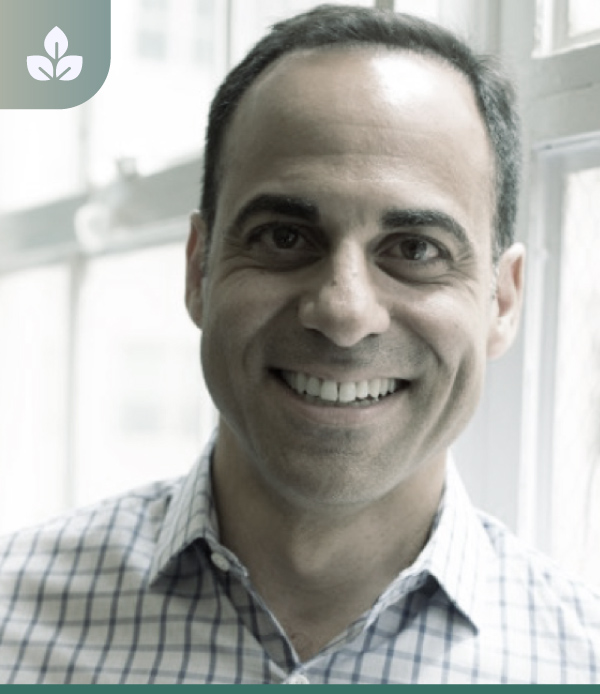
Anthony Marino
President, thredUP

Ashwini Asokan
Founder & CEO, Vue.ai

Akshara Subramanian
Director, Customer Marketing, Vue.ai

